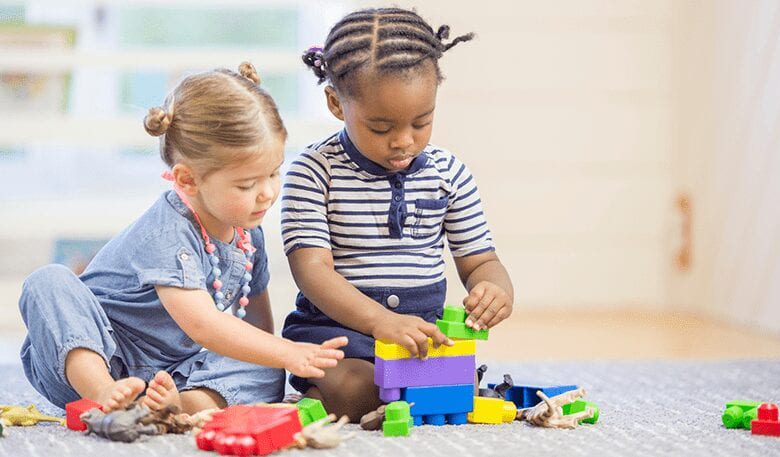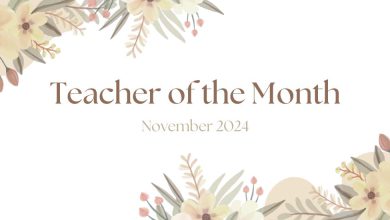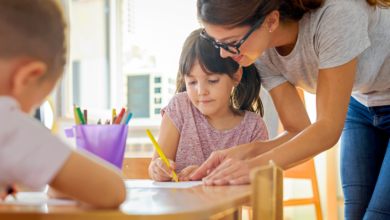Expression & Environment: Principles of Reggio Emilia

Expression & Environment: Principles of Reggio Emilia
Peanut butter and jelly. Chips and salsa. Coffee and cream. Some things should never be separated.
One of the great parts about the Reggio Emilia Philosophy is that many of its principles and methods weave in and around one another. They link together to create a really unified idea of how to interact and educate the next generation of kids.
In our first blog post, we talked about the capability of kids and the importance of collaboration. Today, we’re talking about expression and environment.
The Power of Expression
If you’ve had to learn a second language, you know it’s an experience unlike any other. Some people pick up languages really easily, and we only hate them a little bit 😉
For everyone else, learning another language can be a frustrating process. The thoughts you want to express are fully formed in your head, but you’re limited on how to express them by the handful of words you know. Especially in the beginning, you have to get creative to make up for your gap in vocabulary: act out the word, draw it on a piece of paper, mimic a sound the thing you’re trying to say makes. We lean into other ways of communication instead of depending on language.
Kids are the same way. The third principle of Reggio Emilia reminds us that children are natural communicators, and we as adults should encourage them to express themselves however they feel they can. Whether that’s through words, movement, drawings, paintings, buildings, or sculptures, we at Little Sunshine’s Playhouse want kids to feel like they can express what they’ve learned and what they’re thinking while they’re with us.
Environment Is the Third Teacher
Do you have a favorite place to work? If so, think about why. A lot of the reasons — lighting, noise level, how you decorated, the availability of necessary tools or equipment, the quality of the coffee — all contribute to you doing your work effectively and enjoyably.
Just like with communication, kids are the same way! But for children who attend Little Sunshine’s Playhouse, it’s not about creating a work environment. It’s about creating a learning environment. So instead of setting them up to complete a set of tasks, the Reggio Emilia approach considers the environment where kids learn to be a “third teacher.” In other words, alongside their teachers and parents, the environment plays a vital role in teaching kids.
Creating an engaging, vibrant environment allows children to explore their interests, collaborate with other children openly, and learn from experiences inside and outside the classroom. That intersection of the social and creative is part of what makes Reggio Emilia such a powerful framework. A flexible environment that’s responsive (not restrictive) to the needs of teachers and children allows them to create and learn together, fosters creativity in all kinds of diverse ways, and allows teachers and parents to reflect the values they want to communicate to their children.
And because kids of different ages, developmental stages, and learning styles attend Little Sunshine’s Playhouse, a restrictive, clinical learning environment would set up many kids up for failure. Opening up a classroom to work with diverse kids with diverse interests and minds means everyone has the chance to learn.
Reggio Emilia Approach in Action
Encouraging Expression
Giving children the chance to express themselves in an environment that supports that expression opens up so many learning opportunities for them and their classmates. We get to watch lightbulbs go off in the minds of our kiddos every day and watch them work through and thrive in whatever developmental stage they are in. And while the first four principles of Reggio Emilia prove how capable they are all on their own, the next blog will share how parents get to be a part of the process in an incredibly important way.
This post is the second in a series that takes a deeper dive into the Reggio Emilia approach. If Reggio Emilia is new to you, don’t worry! We already have some great resources that you can use.
Reggio Emilia Philosophy: This one-stop-shop gives you the information you need if you are brand new to Reggio Emilia. The videos are particularly good, if we do say so ourselves.
What is the Reggio Emilia Philosophy?: A quick blog post that summarizes key parts and concepts of Reggio Emilia.
Children Are Capable: The first blog post explaining the ins and outs of the Reggio Emilia philosophy.





